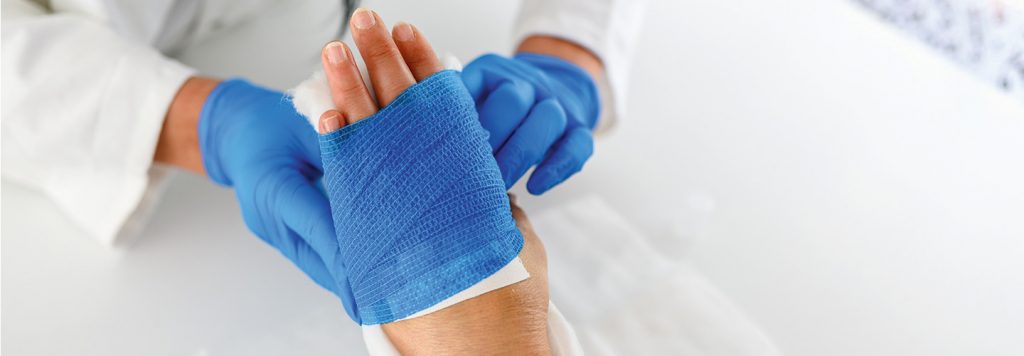
Mobility and Automation in Advanced Wound Care Improve Patient Outcomes
Through the height of the COVID-19 pandemic, experts say that surgical and chronic wound care became a challenge, as many patients recovered at home and received care through virtual visits.
A demand for wound care technology that is more accurate and less invasive is a response to both the rise in telehealth and the strain on clinical resources, says Jon Tower Akerman, vice president of marketing for Swift Medical, a medical imaging company with products in more than 4,000 U.S. healthcare facilities.
“The ability to share high-quality, color-calibrated images of wounds during the pandemic among a patient’s circle of care and with wound specialists proved invaluable,” Akerman says.
Click the banner below for access to exclusive HealthTech content and a customized experience.
Imaging Technology that Provides Equitable Wound Care
Manual wound evaluation can be inaccurate for people with darker skin tones, as many imaging technologies can misinterpret results. Swift Medical’s Ray 1 is an enhanced imaging device that attaches to smartphones and evaluates wounds for blood flow, infection and inflammation in people of all skin tones, Akerman says.
“There is currently no reliable method of determining a diabetic foot ulcer through standard visual inspection, especially on dark-pigmented skin,” Akerman says, adding that the Ray 1 platform also allows patients to see their own wounds clearly, which can help with healing.
“Patients feel more engaged, with 81 percent reporting that photographing their wounds helps them better track and manage their healing progress,” Akerman says.
LEARN MORE: How can health systems harness data in imaging to create better patient outcomes?
Platform Integrations Bolster Wound Care Amid Nursing Shortages
Chronic wounds are becoming more prevalent as the U.S. population ages, says Karen Guzdzial director of marketing for Perceptive Solutions. Its WoundZoom Mobile app for clinicians captures wound measurements, then syncs the photos and documentation to its own digital portal and dashboard, which integrates with many popular electronic health records systems.
Used by clinicians in hospitals, long-term-care and home settings, WoundZoom is filling gaps as wound specialists become scarce, Guzdzial says.
“There are millions of wounds each year in the U.S., but thousands of certified wound care nurses,” Guzdzial says, adding that manual wound measurement methods can overestimate the size of wounds by up to 40 percent.
“You have a lot of inaccuracy and variability from measure to measure, from visit to visit,” Guzdzial says.
Source: Advances in Wound Care, “Human Wound and Its Burden: Updated 2020 Compendium of Estimates,” March 31, 2021
How Smart Bandages Can Advance Wound Care
Tufts University’s School of Engineering is researching “smart threads” at its Nano Lab, developing bandages that can collect data and administer medications to wounds. Data on tissue stress, temperature and emerging infection are reported to a smartphone or desktop platform.
“We are big proponents of closed-loop precision medicine. Our smart bandage platform does just that,” says Sameer Sonkusale, an engineering professor at Tufts and Nano Lab’s director. “It allows for remote wireless monitoring of wound healing, and based on the doctor’s input, it can deliver drugs. It is all automatic, with wireless control.”
Sonkusale says that products are in the research and development stage and could be on the market after clinical trials, which are in the planning phase.
“We are working on smart surgical sutures that can do the same thing a smart bandage does,” he says, adding that his team is also testing smart textiles using the threads. “Imagine being able to monitor pressure ulcers before they become wounds.”
UP NEXT: Learn how the next generation of wearables could transformative healthcare.